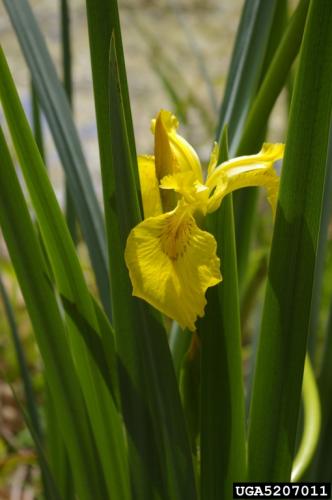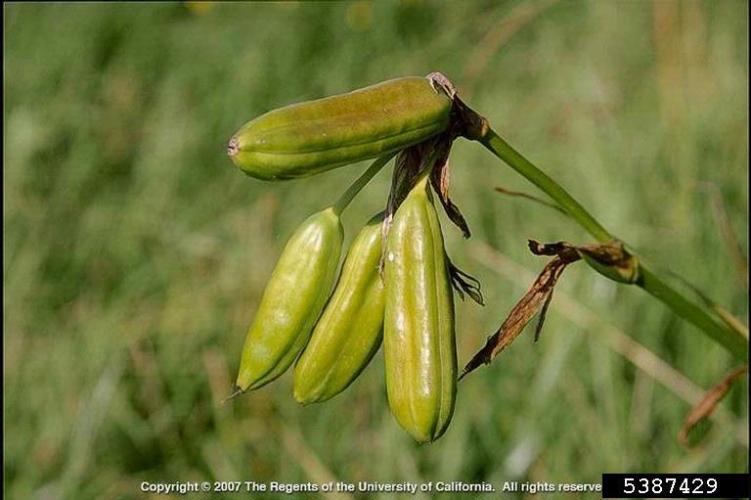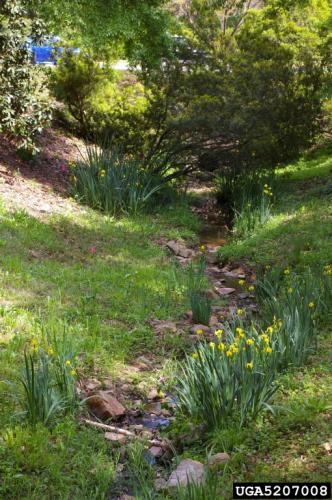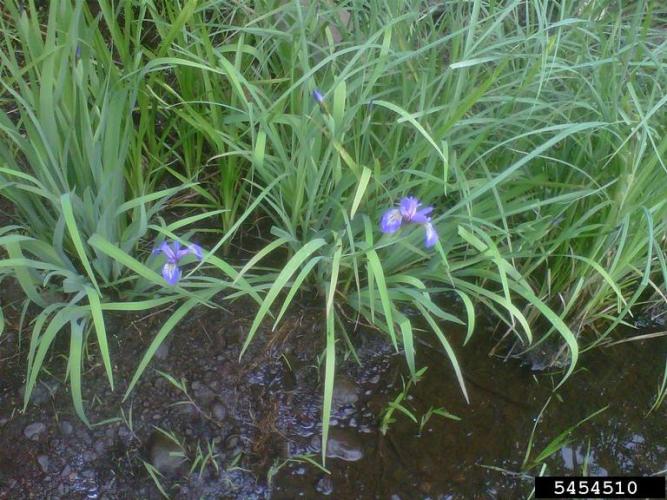Yellow Flag Iris
Identification
Appearance
Iris pseudacorus is a herbaceous perennial that can grow up to 3-4 feet in height.
Foliage
Broad, sword-shaped leaves are stiff, erect and glaucous. They measure between 1.6-3.3 feet long and 0.4-1.2 inches wide. Rhizomes are pink-fleshed and 0.4-1.6 inches in diameter.
Flowers
Flowers are showy and bloom from April to June. Usually yellow, their color can range from nearly white to cream. Flowers are 2.75-3.5 inches wide. They are borne on erect peduncles with several flowers per stem. There are six perianth clawed segments. Three of these are upward-pointing petals and three are down-ward spreading sepals. Sepals often have purple, brown or red veins on their yellow surface.
Fruit
Fruits are 1.6-2.7 inches long capsules. The capsules are 6-angled and cylindric-prismatic to ellipsoid. The average capsule contains about 120 white seeds that harden and turn brown as they mature.
Biology
This species is Quarantined: Class B Noxious Weed
This is considered a watch list species
Origin
Native to Europe
Habitat
Floodplain Forest, Lake or Pond, River or Stream, Yard or Garden. Iris pseudacorus can be found along the edges of lakes, ponds, rivers and streams and immersed in water up to 10 in. deep. It grows well in freshwater wetlands and can tolerate high acidity. In its native habitat, Iris pseudacorus can tolerate living in the upper zones of salt marshes, where it may be surrounded by saline water. The plant also tends not to favor calcareous substrates, though there are exceptions to this, such as along the Housatonic River of Connecticut.
Life cycle
The showy flowers of Iris pseudacorus bloom from April to June. The fruits are 1.6-2.7 in. long capsules. These capsules are 6-angled and cylindric-prismatic to ellipsoid in shape. The average capsule contains around 120 seeds that start out white, then harden and turn brown as the season goes on.
Ecological Threat
Iris pseudacorus forms large clonal populations that displace native species. The rhizomes of this plant are able to survive rather heavy droughts. Both the rhizomes and seeds of this plant can be transported downstream, allowing for further spread of the plant. The seeds of Iris pseudacorus can germinate even after a wetland area burns. In its native habitat, this plant is not widely grazed because of the glycosides it contains, making it poisonous to grazing animals. No birds are known to disperse the seeds of this plant. Iris pseudacorus is still sold and used for water gardens. Caution should be used when hand-pulling this plant, as it can cause skin irritation.
Vermont Distribution
Citations
Photo Credit
5387429, Joseph M. DiTomaso, University of California - Davis, Bugwood.org
5207011, 5207008, Nancy Loewenstein, Auburn University, Bugwood.org
5454510, Elmer Verhasselt, Bugwood.org



